Documentary : Environment
![]()
The Cries of the Silent Creatures
DC222328![]()
清流のヌシの叫び ~繋ぐ命と扱う命~ [TSS]
![]()
![]()

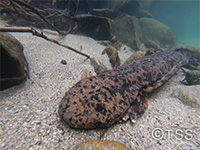



|Length : 47min |Year : 2023 |
The giant salamander is a protected species in Japan, living mainly in the Chugoku region. It became a hot topic when one was discovered in the river alongside the Atomic Bomb Dome in 2022. Why in the middle of the city? What we discovered through interviews was a harsh reality.
Signals From a Tidal Flat
DC222327![]()
テレメンタリー2023 「干潟のシグナル」 [NBN]
![]()
![]()
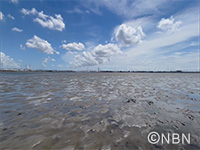




|Length : 24min |Year : 2023 |
Fujimae Tidal Flat at the Port of Nagoya, one of Japan's leading trade ports, is annually visited by over 20,000 migratory birds and known as a foremost paradise for wild fowl in Japan. Once a candidate for a disposal plant for Nagoya's burgeoning amounts of trash, outcry from city residents ended the plan.
This also became an opportunity for making trash separation, a practice then unfamiliar to citizens, take root to reduce continually growing amounts of trash.
However, Fujimae is now threatened by plastic trash. Plastic is resistant to natural breakdown, and through illegal dumping and littering, wind, disaster-caused unintentional release, and outflow via rivers, it reaches the ocean and impacts living things myriadly.
We independently investigated amounts of plastics in Fujimae Tidal Flat mud, and tried to determine the actual state of the new trash problem confronting Fujimae, and how migratory birds that visit this paradise are affected.
Anomalies in the Sanriku Sea – Striving for Survival –
DC222326![]()
テレメンタリー2022 「三陸の海の異変 ー生き残りをかけてー」 [KHB]
![]()
![]()


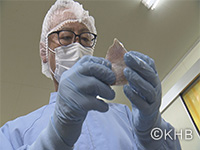


|Length : 25min |Year : 2023 |
Something unusual is happening in the waters off the Sanriku coast. Fishers are catching fish from southern waters, which they have never seen before, and on the desolate seabed, countless numbers of emaciated sea urchins are crowded together on the rocks, stripped bare of seaweed. Is this really the once-abundant Sanriku coast? The reason for this devastation is the rising sea temperature due to climate change. The sea is undergoing a very serious change. Follow the fishers searching for a solution to this environmental crisis as they themselves are at the mercy of these dramatic changes.
Carbon Farming -A Climate Solution Under Our Feet
DC222225![]()
Carbon Farming -A Climate Solution Under Our Feet [NHK]
![]()
![]()
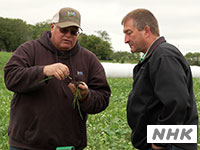
|Length : 49min |Year : 2022 |
A powerful tool for curbing climate change is right beneath our feet... soil! Carbon farming, also called regenerative agriculture, is a revolutionary method that traps carbon from the air into the ground to produce nutritious food. Instead of tilling and using agrochemicals, farmers let the natural ecosystem do the work. We visit pioneers of this method, including Gabe Brown in the US and Yoshida Toshimichi in Japan.
The Birth of Hope -Life Returns to Minamata’s Sea-
DC222224![]()
日本のチカラ ヒメタツに魅せられて ~再生へ向かう誇りの海~ [RKK]
![]()
![]()
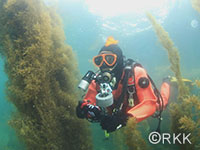
|Length : 44min |Year : 2022 |
The Shiranui Sea, which stretches out from the coast of Minamata City in Kumamoto Prefecture, was once plagued by pollution that decimated its ecosystem. But now, divers from all over the country are rushing to explore its waters. The reason is Makoto Morishita, a diver living in Minamata City. In order to dispel the negative perception of Minamata’s sea, he highlights its charms through the ecology of one rare creature: the Korean seahorse. This seahorse was recognized as a new species in 2017, the first in Japan in 116 years. During their mating season, their unique way of bringing new life into the world captivates all who see it. The miracle of life unfolds in the sea of Minamata, ironically once called a sea of death.















